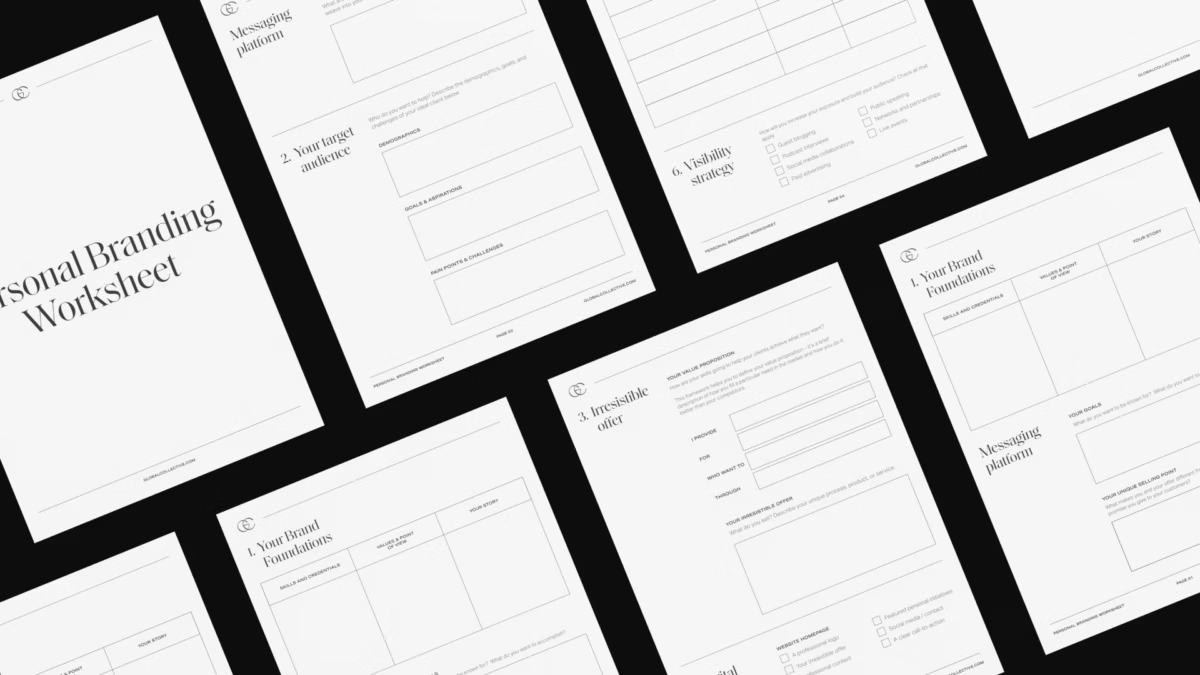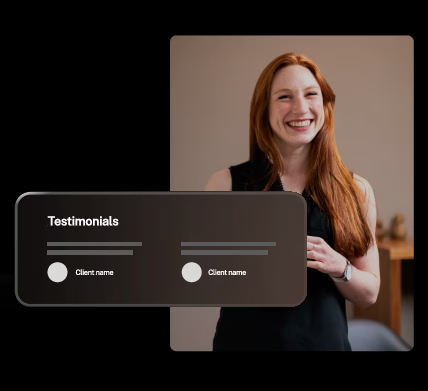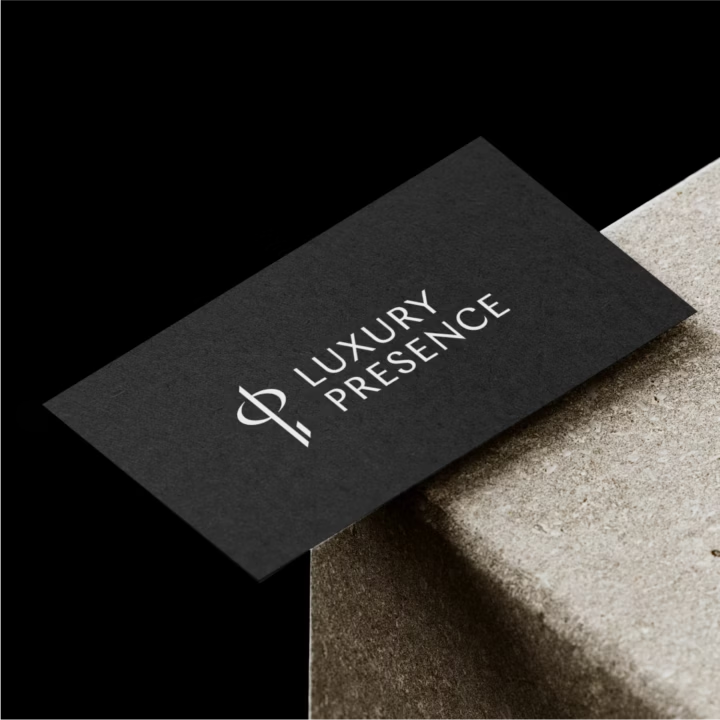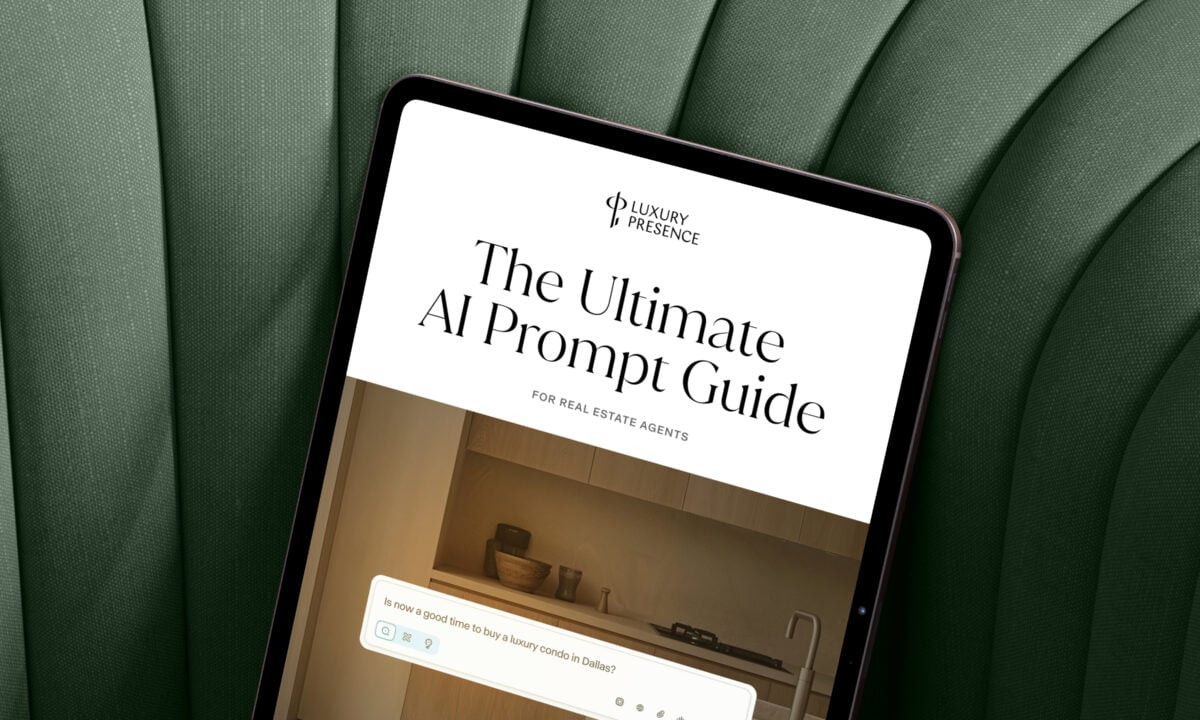
If you’re not paying attention to your competitors, you’re leaving opportunity on the table. A competitive brand analysis helps you uncover opportunities, differentiate your services, and strengthen your position in the market.
This guide focuses on strategy, not reinvention. You’ll learn how to assess what competitors are doing, pinpoint where you stand out, and use that insight to sharpen your approach. Whether you’re building momentum as a solo agent or leading an established team, this framework will show you how to turn observations into a winning brand strategy.
Find It Fast
Why a competitive brand analysis matters
In real estate, clients make decisions quickly and often emotionally. When multiple agents offer similar services, the tie-breaker is usually brand perception. Who appears more trustworthy? More polished? More in tune with the client’s goals?
A competitive brand analysis gives you the clarity to position yourself strategically in a crowded market. It helps you:
- Identify your strengths and weaknesses
- Spot gaps in your messaging or presentation
- Observe best practices from top-performing peers
- Differentiate with purpose instead of guesswork
- Align your brand with your ideal client’s values
Without this level of insight, you risk blending in — or worse, falling behind — as others evolve their branding and positioning.
Rewrite your brand strategy
Our free resources can help you define your personal brand, level up your marketing plan, and reach your target audience.

Identify direct and aspirational competitors
Start your analysis by defining who you’re comparing yourself to. Aim for five to ten direct competitors and two to three aspirational ones.
- Direct competitors are agents or teams in your local market targeting similar clients and listings. These are the professionals your potential clients are actively choosing between.
- Aspirational competitors may operate in different regions or echelons, but their brand presence, voice, or growth inspires you. These could be agents you follow on social networks, see in national media, or hear speaking at industry events.
Studying both groups gives you a grounded view of your current position and a clear picture of where you want to grow.
Use a spreadsheet to track competitor names, websites, social handles, average listing price, geographic focus, and unique selling points. This becomes the foundation of your competitive brand analysis.
Evaluate visual identity and brand consistency

In a visually driven business like real estate, your brand’s look is often prospects’ first impression. For each competitor, evaluate the following:
- Logo: Is it modern, timeless, or outdated?
- Color and typography: Do they align with the clientele
- Photography: Are their headshots and listing photos polished and on-brand?
- Consistency: Do these visuals carry through across social, websites, email signatures, and signage?
Consistency builds recognition, and recognition builds trust.
Action tip: Create a brand comparison board using Pinterest or Canva. Seeing all visuals side by side reveals what’s memorable and what blends in.
Analyze messaging, tone, and positioning

A strong brand doesn’t just look good — it communicates clearly. Analyze how competitors talk about themselves. Examine:
- Taglines and headlines: Are they clear and compelling?
- Agent bios and service descriptions: Do they highlight unique expertise or value?
- Social captions and tone: Are they warm, data-driven, exclusive, or educational?
- Property descriptions: Do they tell a story or just list features?
Compare the tone to the audience they’re targeting. A first-time homebuyer strategy sounds very different from one geared toward luxury investors.
Action tip: Identify three to five phrases each competitor repeats and compare them to those you often use. Are you clearly articulating your value, and is your tone consistent with your audience?
Assess digital presence and engagement strategy
Your online presence is often the first touchpoint for buyers and sellers. Review how competitors show up across these platforms:
- Websites: Are they fast, mobile-optimized, and informative? Do they feature clear CTAs and capture leads?
- Social media: What content types do they use — educational posts, reels, stories, or behind-the-scenes content?
- Engagement: Are followers commenting, sharing, and interacting — or just scrolling past?
- Search visibility: What keywords do they rank for? Are they running Google Ads or promoted content?
Action tip: Track engagement and posting frequency over two to three weeks. Use tools like Semrush for SEO insights, then log all metrics into your competitive brand analysis spreadsheet.
Your guide to the perfect homepage
Leverage our data and expertise to craft an online presence that delivers high-quality leads and best-in-class brand recognition.

Review testimonials and reputation signals
Brand perception isn’t about what you say — it’s what others say about you. Client reviews offer a powerful window into a competitor’s brand experience.
Check platforms like Google, Zillow, Yelp, and LinkedIn for:
- Review volume and average rating
- Specific words repeated in praise (e.g., “responsive,” “great negotiator,” “local expert”)
- Negative feedback trends
Clarify what sets the competition apart
Every strong brand clearly communicates a value proposition: a specific promise that resonates with the ideal client. As you evaluate competitors, ask:
- What’s their core message? (Speed? Service? Results?)
- Are they backing it up with data, social proof, or media exposure?
Then, turn inward:
- Can someone understand your unique value within seconds?
- Are you leaning into your niche?
- Does your messaging support the audience you want to attract?
Action tip: Write (or revise) your one-sentence brand statement. Include who you help, how you help them, and what makes your approach distinct. Use it across bios, websites, and pitches for consistency and clarity.
Turn insight into action
Once you’ve completed your competitive brand analysis, it’s time to translate your findings into meaningful updates. Start by organizing your observations in a competitive brand matrix, scoring yourself and each competitor across five key areas:
- Visual identity
- Messaging and tone
- Digital presence
- Client perception
- Differentiation and value
For each competitor and for yourself, assign a score from 1 to 5 in each category:
- 1 = Needs improvement: Outdated, unclear, or inconsistent
- 2 = Below average: Present but not polished; lacks alignment or impact
- 3 = Average: On par with the market, but nothing stands out
- 4 = Strong: Well-executed and aligned with audience needs
- 5 = Exceptional: Distinctive, consistent, and strategically effective
This side-by-side comparison will reveal where you’re excelling, where you’re middle of the pack, and where your brand needs refinement.
Build your 90-day brand refresh roadmap
With your competitive matrix mapped out, identify two to three high-impact areas to focus on first. Set clear, trackable goals such as:
- Revise homepage headline and tagline by {date}
- Increase Instagram engagement by 15% in the next 30 days
- Refresh headshots and update bio across all platforms by {date}
- Launch neighborhood guide for {area} and link it on homepage
- Add testimonials slider to website with at least three recent client reviews
By combining brand insights with actionable strategies, you’ll ensure your digital presence not only stands out but also converts.
Bring your brand to life with Luxury Presence
A competitive brand analysis is the first step. The next? Building a digital presence that reflects your strengths and attracts the clients you want to serve.
At Luxury Presence, we help top agents and teams turn brand insights into beautifully designed, high-converting websites and marketing strategies. From custom homepage layouts to SEO-optimized content to IDX-integrated search tools, our platform is built to elevate your brand and grow your business.
Luxury Presence can elevate your marketing strategy
Learn how we can help take your real estate business to the next level. Schedule a time to speak with one of our branding experts today.




